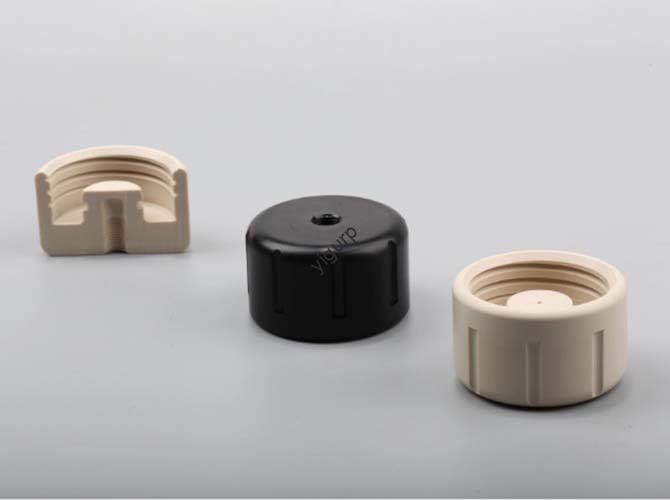Nel mondo manifatturiero frenetico di oggi, how can businesses turn complex design concepts into tangible, Prototipi di alta qualità velocemente? La risposta sta dentro 3D printing ultra-high precision prototypes. This technology is not just a trend—it’s a game-changer that solves long-standing challenges in prototype development, from material waste to design limitations. Sotto, we break down its key components, applicazioni, and value for industries worldwide.
1. Core Advantages of Ultra-High Precision 3D Printed Prototypes
Why choose ultra-high precision 3D printing over traditional prototyping methods? The table below compares the two, highlighting clear benefits for users:
| Caratteristica | Prototipazione tradizionale | Ultra-High Precision 3D Printing |
| Spreco di materiale | Alto (fino a 30% of raw materials) | Basso (≤5%, via precise material control) |
| Tempo di produzione | 2–4 weeks for complex designs | 24–72 hours for same complexity |
| Flessibilità di progettazione | Limitato (hard to make intricate shapes) | Alto (supports micro-scale details) |
| Cost for Small Batches | Costoso (tooling fees apply) | Conveniente (no tooling required) |
| Precisione | ± 0,1 mm tolleranza | ± 0,01 mm tolleranza |
2. Key Materials Powering High-Precision Prototypes
Le prestazioni di 3D printing ultra-high precision prototypes dipende fortemente dalla selezione dei materiali. New innovations have expanded what’s possible—here are the top materials and their uses:
- Ceramica di allumina: Ideal for prototypes in high-temperature environments (PER ESEMPIO., parti del motore automobilistico). It offers excellent durability and resistance to corrosion.
- 200°C Heat-Resistant Resins: Perfect for electronic prototypes, such as 5G RF device casings. They maintain shape and functionality even under continuous heat.
- Sustainable Composites: Made from recycled plastics or plant-based fibers, these materials reduce environmental impact while keeping precision intact—great for eco-conscious industries like consumer electronics.
3. Applicazioni del settore: Solving Real-World Problems
Ultra-high precision 3D printed prototypes aren’t just for show—they solve critical issues in key sectors. Let’s look at three major use cases:
UN. Electronic Communications
In 5G device development, engineers need prototypes with micro-scale ports and signal channels. Traditional methods often fail to replicate these tiny details, leading to delayed testing. Con 3D printing ultra-high precision prototypes, companies like Huawei and Ericsson have cut 5G prototype development time by 40%, accelerating product launches.
B. Dispositivi medici
Surgeons need custom implant prototypes (PER ESEMPIO., Sostituzioni dell'anca) that match a patient’s anatomy exactly. Ultra-high precision 3D printing creates prototypes with ±0.02mm accuracy, allowing doctors to test fit and function before final production—reducing surgical risks by 25% (per a 2024 studiare in The Lancet).
C. Microelectromechanical Systems (Mems)
MEMS devices (like tiny sensors in smartphones) require prototypes with components smaller than a grain of sand. Ultra-high precision 3D printing is the only method that can produce these reliably, supporting innovations in IoT and wearables.
4. Addressing Common Challenges: What Users Ask
Many businesses hesitate to adopt 3D printing ultra-high precision prototypes due to perceived barriers. Here’s how to solve them:
- Sfida 1: Costi elevati
Soluzione: While initial printers are expensive, small-batch prototyping costs 50% less than traditional methods. Per esempio, a medical device prototype that once cost \(5,000 now costs \)2,500.
- Sfida 2: Operational Complexity
Soluzione: Modern software (PER ESEMPIO., Fusione Autodesk 360) simplifies design-to-print workflows. Most teams can master basic operations within 1–2 weeks of training.
- Sfida 3: Opzioni materiali limitate
Soluzione: Annual material innovations (PER ESEMPIO., 2024’s launch of carbon-fiber reinforced resins) now cover 90% of industrial needs. Suppliers like Stratasys offer tailored material packages for specific industries.
5. La prospettiva della tecnologia Yigu
Alla tecnologia Yigu, Crediamo 3D printing ultra-high precision prototypes is the cornerstone of next-gen manufacturing. Our team has supported clients in electronics and medical fields to cut prototype lead times by 50% pur migliorando la precisione. We’re investing in AI-driven software to further simplify operations—helping even small businesses access this technology. The future isn’t just about printing prototypes; it’s about printing solutions that solve real user problems.
Domande frequenti
- How long does it take to print an ultra-high precision prototype?
La maggior parte dei prototipi di piccoli a medi (PER ESEMPIO., a 5G sensor casing) take 24–72 hours. Larger or more complex designs (PER ESEMPIO., a MEMS device) può richiedere 5-7 giorni.
- Can ultra-high precision 3D printed prototypes be used for final production?
Yes—for small batches (fino a 100 unità). Per la produzione di massa, prototypes are used to test designs before switching to traditional methods (PER ESEMPIO., stampaggio a iniezione).
- Is this technology environmentally friendly?
Assolutamente. It reduces material waste by 80% compared to traditional prototyping. When paired with sustainable materials (like recycled resins), it cuts carbon emissions by 30% per prototipo.
